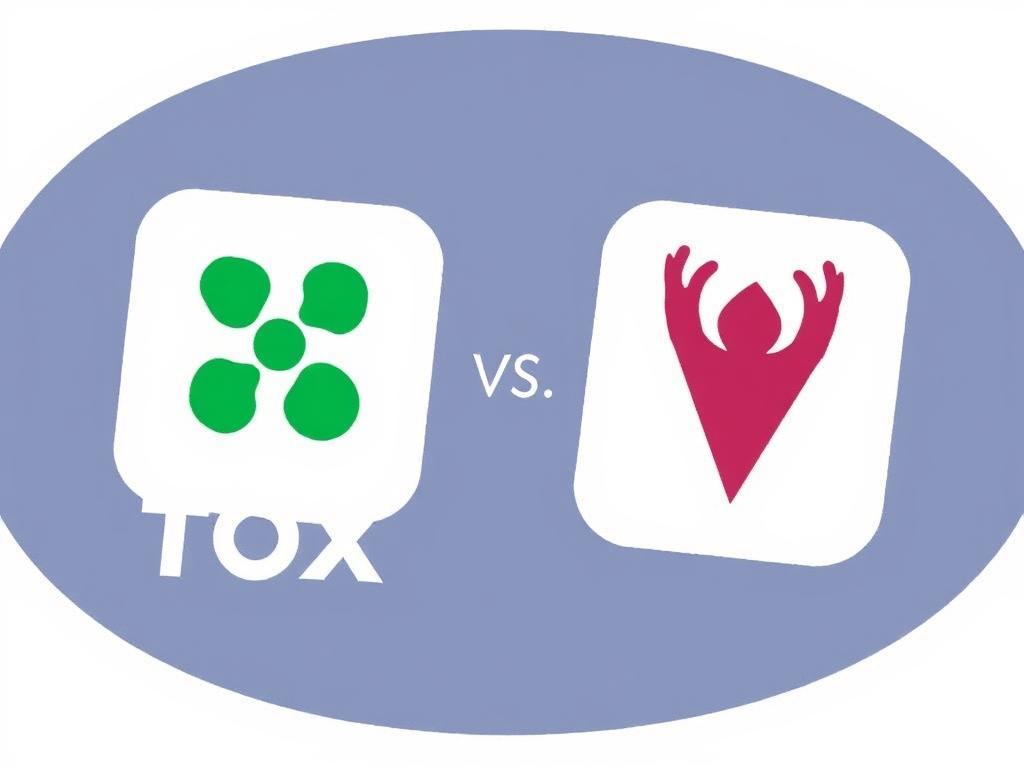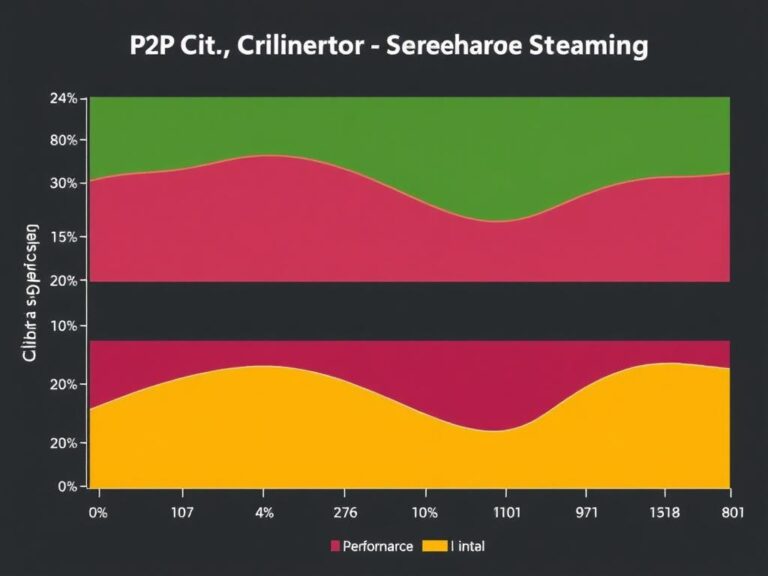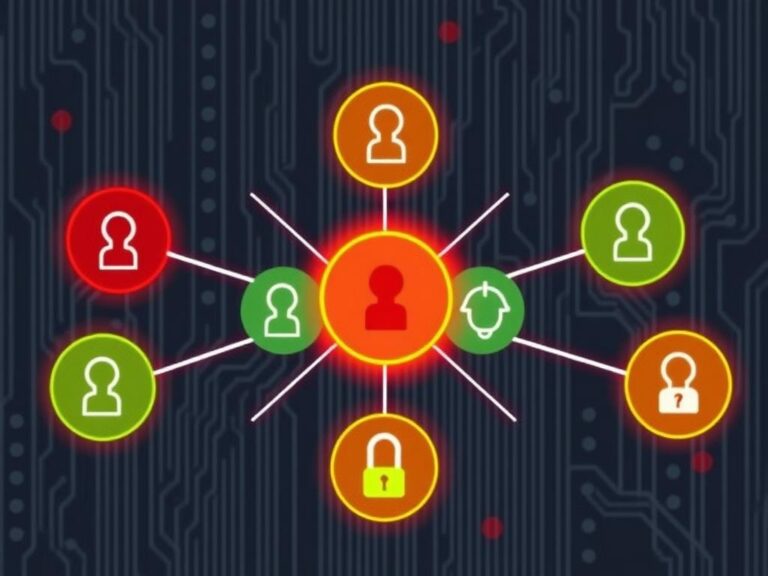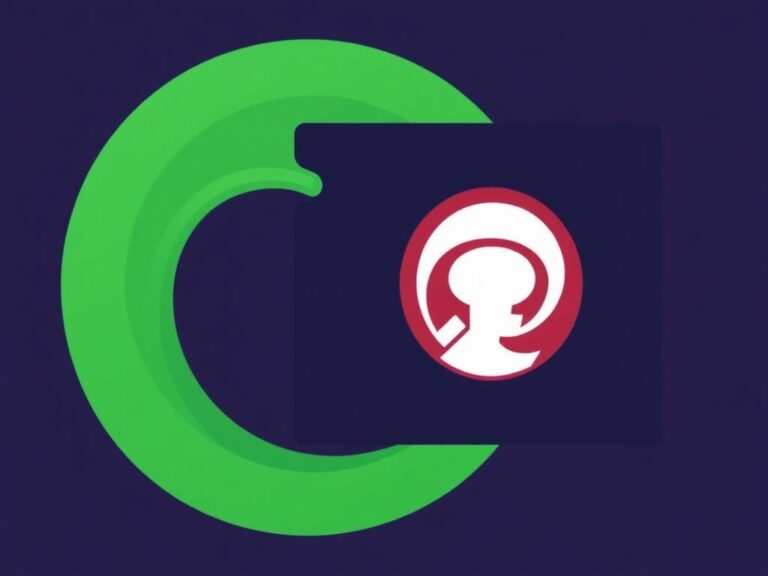Tox vs. Briar: A Deep Dive into Secure P2P Messaging Apps
In today’s digital age, where privacy concerns are mounting and data breaches haunt headlines, secure communication is more important than ever. Messaging apps, once a simple convenience, have transformed into battlegrounds for privacy and security. Among the many options available, Tox and Briar stand out as two distinctive secure peer-to-peer (P2P) messaging apps that promise privacy, decentralization, and resistance to censorship. But how do they compare? Which app really offers the strongest protection for your conversations? In this article, we’ll explore the fascinating world of Tox vs. Briar, examining their unique features, security protocols, ease of use, and practical applications to help you decide which is best for your secure messaging needs.
Understanding the Basics of Secure P2P Messaging Apps
Before diving into the Tox vs. Briar showdown, it’s crucial to understand what secure P2P messaging apps are and why they matter. Unlike traditional messaging services that rely on central servers—think WhatsApp or Messenger—P2P apps connect users directly, often encrypting messages end-to-end without intermediary servers. This direct connection reduces the risk of third-party surveillance, server compromise, or data harvesting. Both Tox and Briar leverage this P2P technology but do so in different ways, catering to slightly different audiences and security needs.
What Makes P2P Messaging Secure?
Security in P2P messaging apps hinges on three main components: encryption, decentralization, and resilience to interference.
- Encryption: Ensures that only the communicating parties can read the messages, even if intercepted.
- Decentralization: Eliminates the need for a central server, minimizing data collection and points of failure.
- Resilience: Maintains communication even under adverse conditions like network disruptions or censorship.
Both Tox and Briar are designed with these principles in mind, but they execute them quite differently, resulting in unique user experiences.
Tox: A Versatile & Developer-Friendly Secure Messenger
Tox has been around for nearly a decade, positioning itself as an open-source, decentralized, and encrypted messenger that works across multiple platforms including Windows, macOS, Linux, Android, and iOS. It’s known for its versatility and a rich feature set that attempts to mirror popular messaging apps but with a heavy emphasis on privacy.
Core Features of Tox
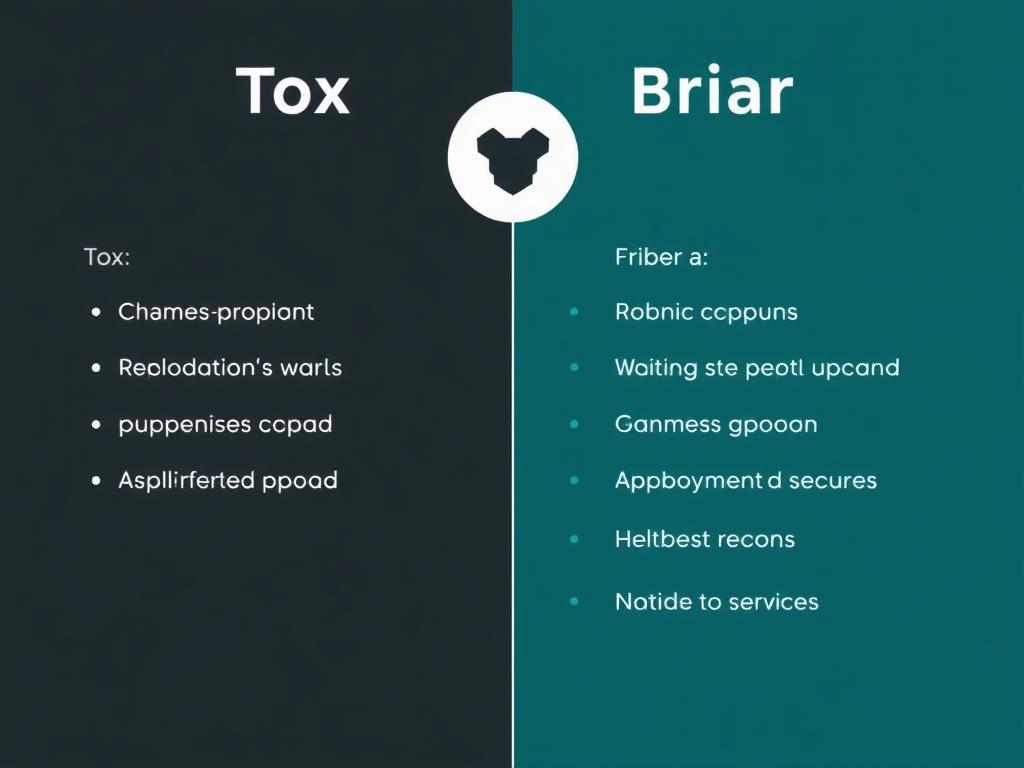
| Feature | Description |
|---|---|
| End-to-End Encryption | Messages, voice calls, and video calls are protected with strong encryption standards to prevent eavesdropping. |
| Decentralized Architecture | Eliminates servers by using a Distributed Hash Table (DHT) to connect peers directly. |
| Cross-Platform Compatibility | Available on many operating systems, allowing seamless communication across devices. |
| Voice and Video Calls | Supports not only text but also encrypted voice and video calls. |
| Group Chats | Enables secure group messaging. |
Tox is praised for its simplicity in providing secure communications while supporting multimedia interactions, making it easy for users transitioning from mainstream apps. However, because it relies heavily on internet connectivity and its DHT network, performance can vary depending on the number of online peers and network conditions.
Security Aspects of Tox
Tox employs the NaCl (Networking and Cryptography library) for cryptography, which is a respected choice in the security community. Messages are automatically encrypted end-to-end, and the absence of a central server drastically lowers the risk of data collection or server-based attacks. However, the decentralized nature also means that user discovery and connections can be slow in some cases compared to centralized apps.
Briar: The Resilient, Offline-Friendly Secure Messenger
Briar approaches secure P2P messaging from a slightly different angle, focusing on resilience and offline capabilities. Developed with activists, journalists, and people in oppressive regimes in mind, Briar enables communication without relying solely on the internet. It can connect peers through Bluetooth, Wi-Fi direct, or delayed synchronization over the internet.
Key Features of Briar
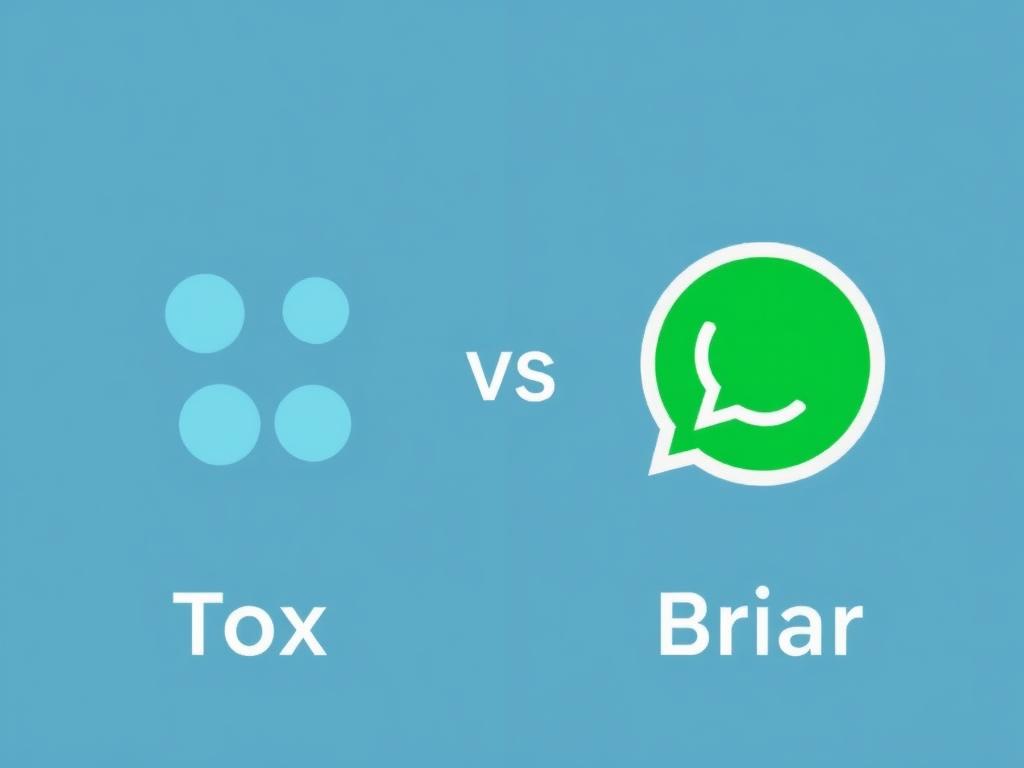
| Feature | Description |
|---|---|
| Internet and Offline Messaging | Uses direct connections like Bluetooth and Wi-Fi alongside internet when available. |
| End-to-End Encryption | All communication is encrypted, ensuring privacy for messages and metadata. |
| Metadata Protection | Briar minimizes metadata storage to protect users from network surveillance. |
| Anonymous Use | Does not require phone numbers or email addresses for registration. |
| Offline Group Chats | Can create ad-hoc group chats even when offline. |
Briar’s unique ability to operate offline or in censorship-heavy environments makes it incredibly valuable for users who need secure communication despite poor or restricted internet access. The app’s focus on metadata resistance adds an additional layer of security not always emphasized in other messengers.
Security and Anonymity in Briar
Briar leverages the Tor network for internet communication, ensuring anonymity by routing messages through multiple nodes. This not only encrypts messages but also obscures sender and receiver identities. Coupled with direct wireless communication methods, Briar provides an extraordinary level of resilience against monitoring and censorship.
Comparing Tox and Briar: Use Cases, Performance, and Security
Choosing between Tox vs. Briar depends largely on your specific needs—whether you prioritize versatility and multimedia features or require resilient, offline communication with maximum metadata protection.
Comparison Table: Tox vs. Briar
| Aspect | Tox | Briar |
|---|---|---|
| Usage Scenario | Everyday secure messaging including voice and video calls. | Activists, journalists, or users in censorship-heavy or offline situations. |
| Connectivity | Internet-based using DHT network. | Internet, Bluetooth, and Wi-Fi direct. |
| Encryption | End-to-end encryption via NaCl library. | End-to-end encryption and anonymous routing via Tor. |
| Metadata Protection | Limited, due to dependence on public DHT nodes. | Strong focus on minimizing metadata visibility. |
| User Identity | Public keys shared between users. | No phone numbers or emails required; identity based on cryptographic keys. |
| Platform Availability | Windows, macOS, Linux, Android, iOS. | Primarily Android, with plans for broader support. |
| Multimedia | Supports voice and video calls. | No voice or video calls; focuses on text and attachments. |
Who Should Use Tox?
If you want a secure messenger that feels familiar, supports multimedia chat, and can run on multiple devices, Tox is an appealing choice. It’s great for users who value encryption but also want the convenience of modern messaging apps, including voice and video communication. Tox’s open-source nature allows developers to adapt and improve the protocol, making it a dynamic ecosystem for secure messaging enthusiasts.
Who Should Opt for Briar?
Briar excels in scenarios demanding exceptional resistance to censorship and surveillance, such as communication in restrictive regimes or disaster zones with limited internet. Its ability to connect via Bluetooth or Wi-Fi direct means you can message even when there is no internet service. Journalists, activists, and privacy advocates who need anonymous, metadata-resistant communication will find Briar’s design purpose-built for these challenges.
Practical Considerations: Ease of Use and Network Dependence
Adoption of secure P2P messaging apps can sometimes be hindered by usability issues. Tox offers a relatively straightforward setup, where users exchange public keys or QR codes to connect, similar to popular apps. However, the network’s decentralized nature means initial connection times can be longer, and performance hinges on the number of peers currently online.
Briar’s setup is simpler in terms of user identity—no phone numbers or accounts are necessary—but its offline capabilities introduce different challenges, such as requiring close physical proximity for Bluetooth or Wi-Fi connections. Although Briar’s offline messaging enhances security, it might limit convenience for users accustomed to instant global connectivity.
Security Risks and Limitations to Keep in Mind
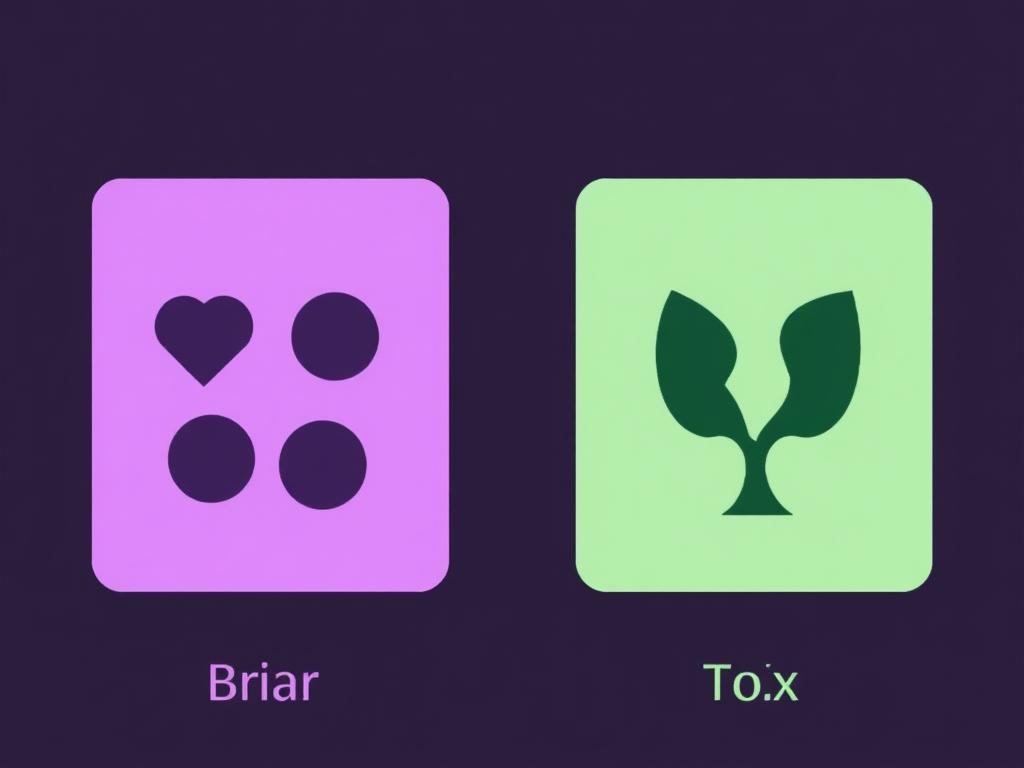
While both Tox and Briar champion strong security measures, no system is without limitations. Tox’s reliance on a DHT network means users rely on public nodes, which might be susceptible to denial-of-service attacks or traffic analysis. Meanwhile, Briar’s dependence on physical proximity or intermittent internet access might not suit users seeking constant connectivity or multimedia capabilities.
Moreover, both apps require a proactive user base willing to manage cryptographic keys and understand decentralization principles, which may be a hurdle for casual users seeking “plug and play” solutions.
Conclusion
Deciding between Tox vs. Briar ultimately comes down to your personal or professional priorities in secure communication. If you want a versatile, multimedia-friendly secure messenger that supports a range of devices and features, Tox is a strong candidate, delivering solid encryption in a decentralized package. On the other hand, if your foremost needs include anonymity, metadata protection, and the ability to communicate even without internet access, Briar’s unique offline and anonymous design makes it unparalleled in those contexts. Both apps represent vital steps forward in the evolution of privacy-focused communication, reminding us that secure P2P messaging does not have to sacrifice usability for safety, but rather balance both to empower users worldwide. Whatever your choice, shifting toward secure and decentralized messaging is a meaningful way to take control of your privacy in an ever-connected world.
